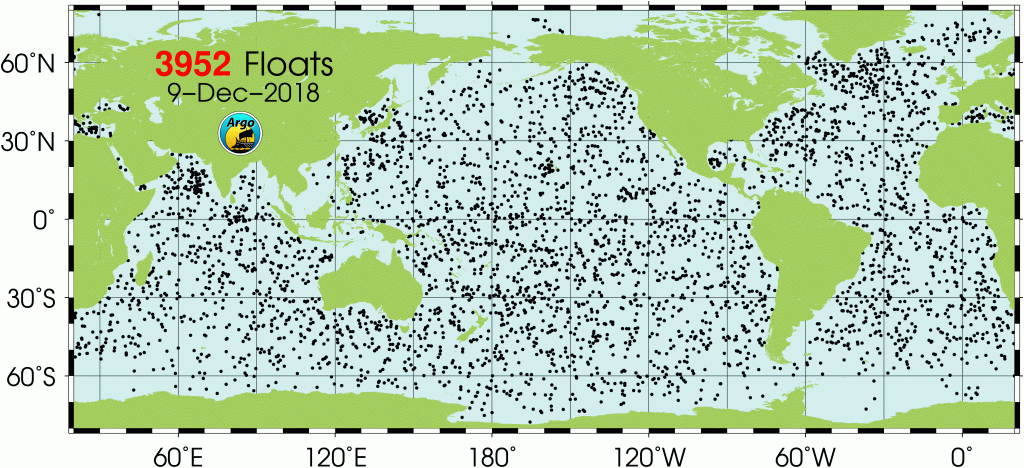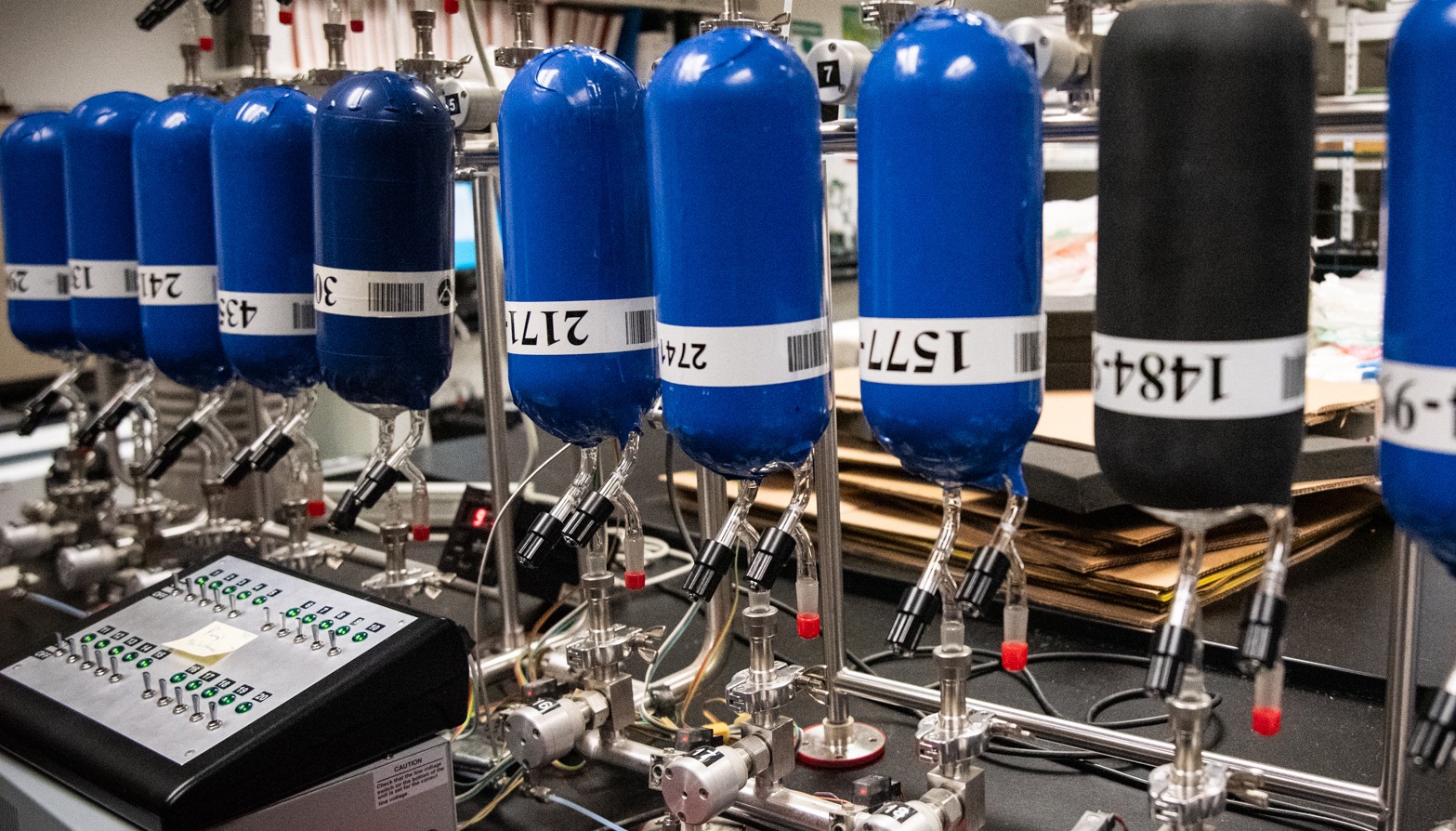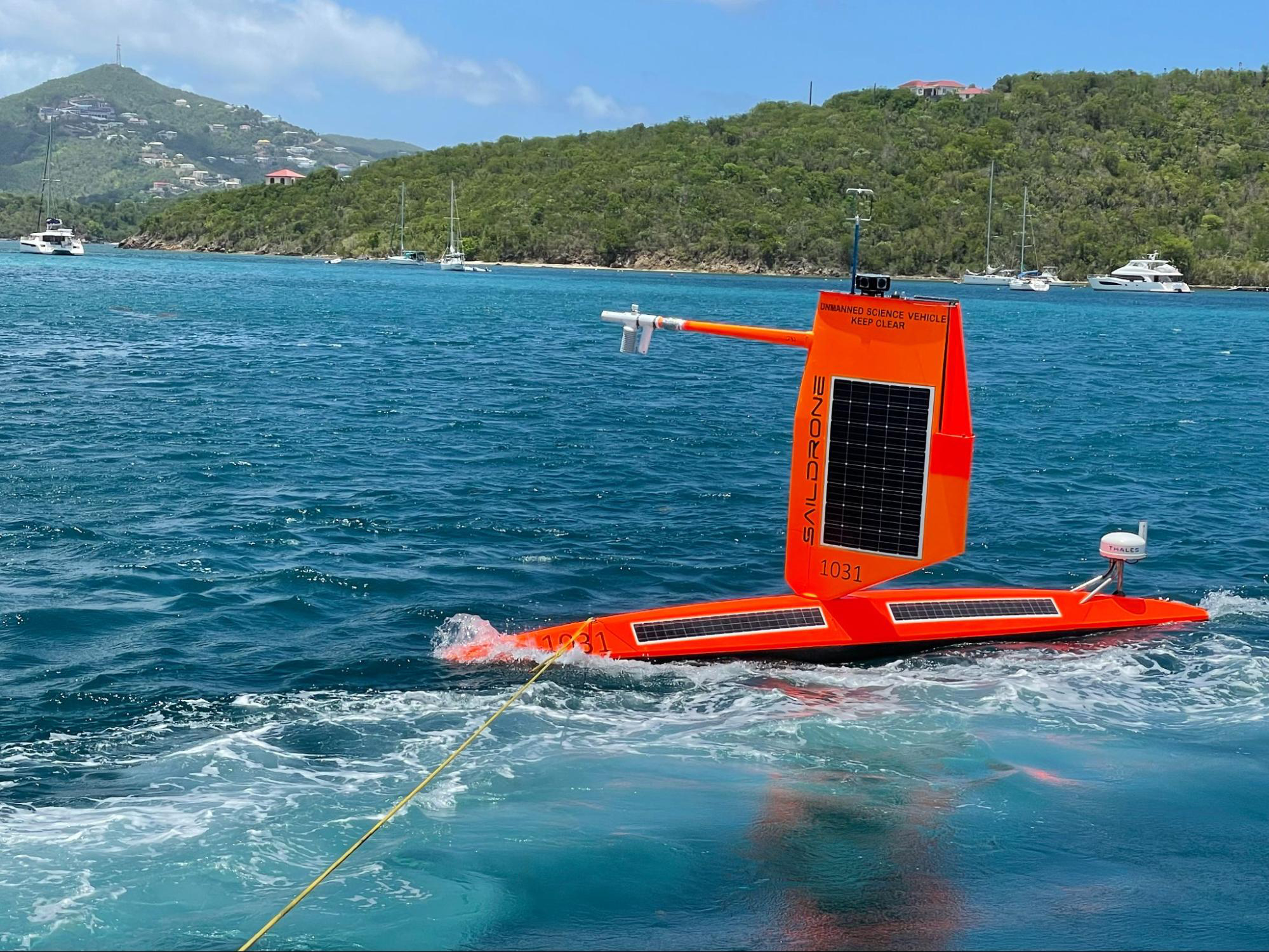An Argo float recently surfaced in the Atlantic Ocean to transmit temperature and salinity measurements from over a mile deep. This float was made in France and launched by German scientists in 2016, and it is one of thousands in the international Argo Program, which just recorded its two millionth profile, marking a major milestone for the 20-year old observation program.
“The Argo Program is a hallmark of NOAA’s ocean observing systems. It has revolutionized our ability to track changes in our global oceans,” said David Legler, NOAA Research chief of the Ocean Observing and Monitoring Division. “In the wake of Hurricanes Michael and Florence, rising sea levels, and with an El Niño on the horizon, ocean information from systems like Argo are paramount for accurate weather and climate predictions.”
Historically, our understanding of the ocean has come from satellite information, ship-based observations, moored buoys, and other anchored instruments. Argo floats are robotic and able to sample much more of the global ocean, providing nearly four times the information as all other ocean observing tools combined. The cylindrical, free-floating devices that stand five feet tall measure temperature and salinity in the ocean. Approximately every 10 days, an Argo float dives about 1.2 miles deep, drifts with the ocean currents, and then surfaces to transmit data in real-time via satellite. Argo floats cycle through these dives, or “profiles” for four to five years on battery power. Since its inception in 1999, the Argo Program has grown to include almost 4,000 floats and participation from 26 countries across the globe.


Developing new Argo floats
Even as it celebrates its two millionth profile, the Argo Program is expanding and innovating. New types of Argo floats are being tested. One of these floats is Deep Argo, which can dive three times deeper, down to 3.7 miles, helping us understand the largely unobserved deep ocean. Another float type gaining international support is the biogeochemical Argo, a float that can measure a range of conditions such as oxygen, carbon, and pH: critical for addressing pressing environmental issues, such as ocean acidification and low oxygen levels that have been detected in some parts of the ocean and are associated with harmful algal blooms.
Major ocean and climate assessment programs, such as the Intergovernmental Panel on Climate Change (IPCC), already rely on Argo. It is a key tool used to track how fast the Earth’s climate is warming. All Argo data are freely available to anyone, and have been used for broad applications including aquaculture, pollution monitoring, ocean education, and national defense. On average, a scientific paper using Argo data is published every day.
The U.S. Argo partners include the University of Washington, the Scripps Institution of Oceanography, University of California San Diego, Woods Hole Oceanographic Institution, and NOAA’s Ocean Observing and Monitoring Division, Pacific Marine Environmental Lab, and Atlantic Oceanographic and Meteorological Lab. The U.S. Argo Program maintains about half of the global fleet, deploying around 400 new Argo floats each year.



